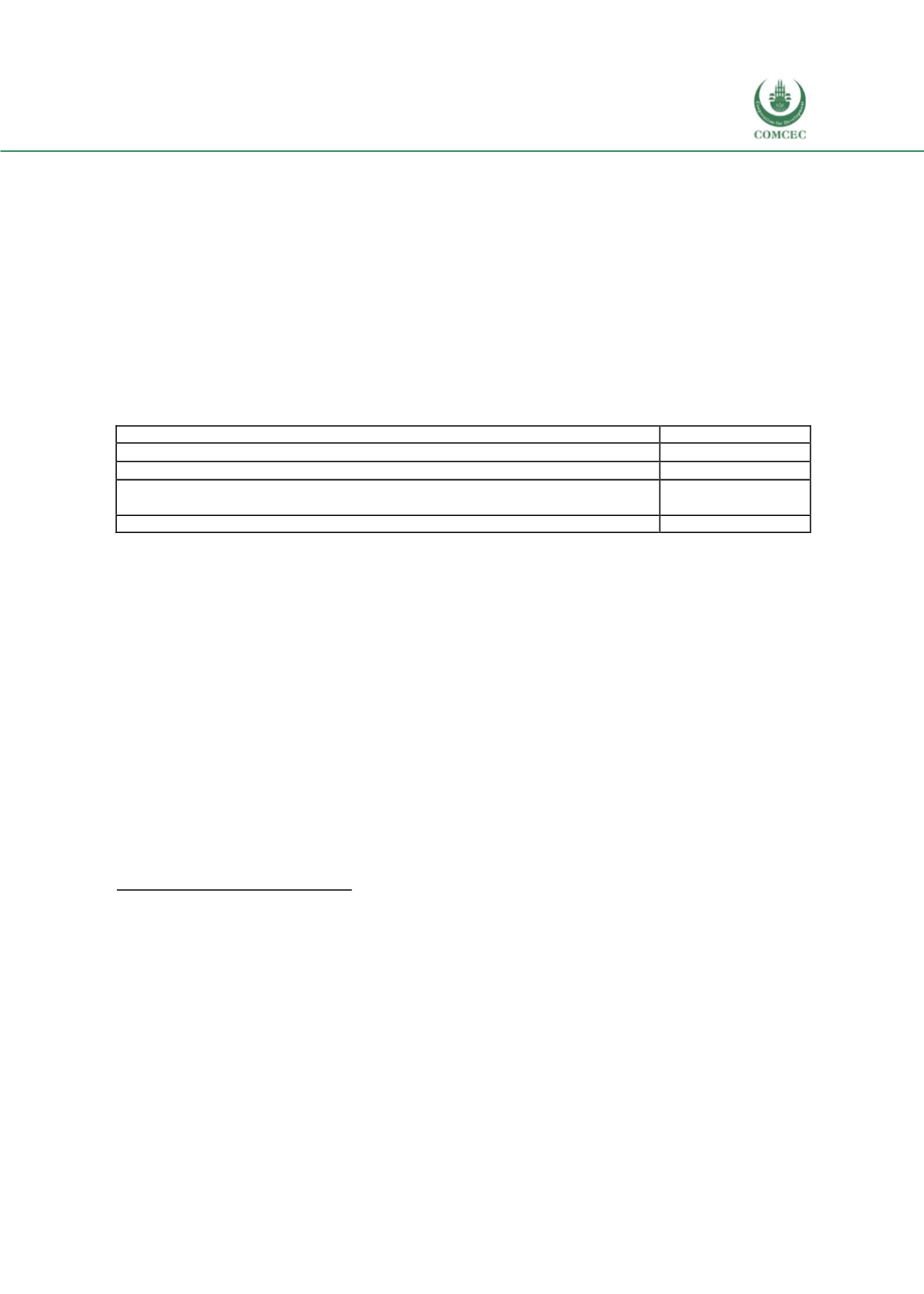

Increasing the Resilience of the Food Systems
In Islamic States in Face of Future Food Crises
49
in 2017 was 40% lower than the 2016 harvest, while heavy rains caused floods that affected
more than 222,000 people. Key contributors to malnutritionwere food insecurity, disease, and
access limitations to primary healthcare, safe water, and sanitation.
The number of acutelymalnourished children underfive was 2.4million, 700,000 of whom faced
severe acute malnutrition; only 43% of children were fully immunized.
179
Low purchasing
power forced households to reduce their food spend, lowering nutritional standards
considerably. In 2013, 78% of severely acutely malnourished children were not treated.
180
In
one area of South Darfur, up to 90% of mothers reported night blindness—which is caused by
vitamin A deficiency—during their most recent pregnancy.
181
In 2013, undernourishment was
classified as "extreme" for up to 62% of mothers in some locations.
182
Table 23: Sudan - Key Malnutrition Indicators
Prevalence of anemia among women of reproductive age (15-49 years)
30.7% (2016)
183
Percentage of population using at least basic drinking water services
58.9 (2015)
184
Percentage of children aged 0-59 months stunted (>30% = very high)
38
185
Percentage of children aged 6-23 months received "Minimum Acceptable Diet" for
growth & development
15
186
Percentage of population using at least basic sanitation services
34.6
187
(2015)
Source: FAO
3.3.
Food Production and Trade in the OIC
While recent food crises have been concentrated in a handful of OIC member countries, the OIC
as a whole is vulnerable to future food crises, which could be caused by a number of factors,
including instability and environmental shocks, as examined earlier in this report.
While OIC countries have the resources to produce food, collectively, OIC members are net
importers of food and beverage, and oftentimes, the over-reliance on imports is due to a lack of
investment in domestic agriculture and food production facilities, underpinned by aweakpolicy
infrastructure.
This subsection presents an examination of the OIC’s overall credentials in terms of food
production and trade, to lay the groundwork for segmenting the OIC by level of vulnerability to
future food crises.
179
UNICEF. (2014) SudanMultiple Indicator Cluster Survey. Retrieved from
http://mics.unicef.org/files?job=W1siZiIsIjIwMTYvMDUvMTgvMjEvNTkvNTEvODg3L1N1ZGFuXzIwMTRfTUlDU19FbmdsaXNoLnBkZiJdXQ&sha=32907fc39e6e2e6e
180
World Food Programme. (2014, November). The Case for Investment in Nutrition in Sudan. Retrieved from
https://www.avenirhealth.org/download/OHTCountryApplications/PDF/150619%20P893_UNICEF_Investment_Case_Collated_v3.pdf
181
Federal Ministry of Health/UNICEF. 2014. S3M Survey Report.
182
UNICEF. (2014). Sudan Nutrition Cluster Bulletin. Issue 1, Retrieved from
https://www.unicef.org/sudan/Sudan_Nutrition_Cluster_Bulletin.pdf183
FAOSTAT Online Database.
http://www.fao.org/faostat/en/184
FAOSTAT Online Database.
http://www.fao.org/faostat/en/185
UNICEF. (2014). SudanMultiple Indicator Cluster Survey. Retrieved from
http://mics.unicef.org/files?job=W1siZiIsIjIwMTYvMDUvMTgvMjEvNTkvNTEvODg3L1N1ZGFuXzIwMTRfTUlDU19FbmdsaXNoLnBkZiJdXQ&sha=32907fc39e6e2e6e
186
Ibid.
187
FAOSTAT Online Database.
http://www.fao.org/faostat/en/















